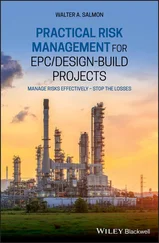Determining What Makes a Project a Project
No matter what your job is, you handle a myriad of assignments every day. For example, you may prepare a status report, conduct a meeting, design a marketing campaign, or relocate to new offices. Or you may make your company’s information systems more user-friendly, develop a research compound in the laboratory, or improve the organization’s public image. Not all these assignments are projects. How can you tell which ones are and which ones aren’t? This section is here to help.
Understanding the three main components that define a project
A project is a temporary undertaking performed to produce a unique product, service, or result. Large or small, a project always has the following three components:
Specific scope: Desired results or products (check out Chapter 5for more on describing desired results)
Schedule: Established dates when project work starts and ends (see Chapter 7for how to develop responsive and feasible project schedules)
Required resources: Necessary number of people, funds, and other supporting elements like lab space, test equipment, manufacturing facilities, computer hardware and software, and so on (see Chapter 8for how to establish whom you need for your project and Chapter 9for how to set up your budget and determine any other resources you need)
 As illustrated in Figure 1-1, each component affects the other two. For example: Expanding the type and characteristics of desired outcomes may require more time (a later end date) or more resources. Moving up the end date may necessitate paring down the scope or increasing project expenditures (for instance, by paying overtime to project staff). It is within this three-part project definition that you perform work to achieve your desired results.
As illustrated in Figure 1-1, each component affects the other two. For example: Expanding the type and characteristics of desired outcomes may require more time (a later end date) or more resources. Moving up the end date may necessitate paring down the scope or increasing project expenditures (for instance, by paying overtime to project staff). It is within this three-part project definition that you perform work to achieve your desired results.

© John Wiley & Sons, Inc.
FIGURE 1-1:The relationship between the three main components of a project.
Although many other considerations may affect a project’s performance, these three components are the basis of a project’s definition for the following three reasons:
The only reason a project exists is to produce the results specified in its scope.
The project’s end date is an essential part of defining what constitutes successful performance, as the desired result must be achieved by a certain time to meet its intended need.
The availability of resources shapes the nature of the results the project can produce.
A Guide to the Project Management Body of Knowledge, 7th Edition (PMBOK 7), elaborates on these components by:
Emphasizing that product includes both the basic nature of what is to be produced (for example, a new software program or a new prescription drug) and its required characteristics (for example, the features and functions the software program must include), which are defined as the product’s quality.
Noting that resources refers to funds, as well as to other, nonmonetary resources, such as people, equipment, raw materials, and facilities.
PMBOK 7 also emphasizes that risk (the likelihood that not everything will go exactly according to plan) plays an important role in defining a project and that guiding a project to success involves continually managing trade-offs among the three main project components — the products to be produced and their characteristics, the schedule, and the resources required to do the project work.
 You may have encountered the previous concept with slightly different terms, including the Project Management Triangle, the Time-Cost-Scope Continuum, the Triple Constraint, and the Iron Triangle, to name a few. Time is often used interchangeably with Schedule, Cost with Resources, and Scope with Product. The exact terminology you use is immaterial; the key takeaway from this section is that every project is constrained in some way or another by each of these three elements and all three are inextricably linked. Your job, should you choose to accept it, is to use these three levers throughout your project to influence the quality of your results.
You may have encountered the previous concept with slightly different terms, including the Project Management Triangle, the Time-Cost-Scope Continuum, the Triple Constraint, and the Iron Triangle, to name a few. Time is often used interchangeably with Schedule, Cost with Resources, and Scope with Product. The exact terminology you use is immaterial; the key takeaway from this section is that every project is constrained in some way or another by each of these three elements and all three are inextricably linked. Your job, should you choose to accept it, is to use these three levers throughout your project to influence the quality of your results.
Recognizing the diversity of projects
Projects come in a wide assortment of shapes and sizes. For example, projects can:
Be large or small:Installing a new subway system, which may cost more than $1 billion and take 10 to 15 years to complete, is a project.Preparing an ad hoc report of monthly sales figures, which may take you a few hours to a day or two to complete, is also a project.
Involve many people or just you:Training all 10,000 of your organization’s staff on a new diversity, equity, and inclusion policy, is a project.Rearranging the furniture and equipment in your office is also a project.
Be defined by a legal contract or by an informal agreement:A signed contract between you and a customer that requires you to build a house defines a project.An informal promise you make to install a new software package on your colleague’s computer also defines a project.
Be business-related or personal:Conducting your organization’s annual blood drive is a project.Organizing and hosting a dinner party for 15 friends is also a project.
A PROJECT BY ANY OTHER NAME JUST ISN’T A PROJECT
People often confuse the following two terms with project:
Process: A process is a series of routine steps to perform a particular function, such as a procurement process or a budget process. A process isn’t a one-time activity that achieves a specific result; instead, it defines how a particular function is to be done every time. Processes, like the activities that go into buying materials, are often parts of projects.
Program: This term can describe two different situations. First, a program can be a set of goals that gives rise to specific projects, but, unlike a project, a program can never be completely accomplished. For example, a health-awareness program can never completely achieve its goal (the public will never be totally aware of all health issues as a result of a health-awareness program), but one or more projects may accomplish specific results related to the program’s goal (such as a workshop on minimizing the risk of heart disease). Second, a program sometimes refers to a group of specified projects that achieve a common goal.
 No matter what the individual characteristics of your project are, you define it by the same three components we discussed in the previous section: results (or scope), start and end dates (or schedule), and resources (or cost). The information you need to plan and manage your project is the same for any project you manage, although the ease and the time to develop it may differ. The more thoroughly you plan and manage your projects, the more likely you are to succeed.
No matter what the individual characteristics of your project are, you define it by the same three components we discussed in the previous section: results (or scope), start and end dates (or schedule), and resources (or cost). The information you need to plan and manage your project is the same for any project you manage, although the ease and the time to develop it may differ. The more thoroughly you plan and manage your projects, the more likely you are to succeed.
Describing the four phases of a project life cycle
 A project’s life cycle is the series of phases that the project passes through as it goes from its genesis to its completion. A phase is a collection of logically related project activities that culminates in the completion of one or more project milestones or deliverables (see Chapters 5and 6for more on project deliverables). Every project, whether large or small, passes through the following four life cycle phases:
A project’s life cycle is the series of phases that the project passes through as it goes from its genesis to its completion. A phase is a collection of logically related project activities that culminates in the completion of one or more project milestones or deliverables (see Chapters 5and 6for more on project deliverables). Every project, whether large or small, passes through the following four life cycle phases:
Читать дальше

 As illustrated in Figure 1-1, each component affects the other two. For example: Expanding the type and characteristics of desired outcomes may require more time (a later end date) or more resources. Moving up the end date may necessitate paring down the scope or increasing project expenditures (for instance, by paying overtime to project staff). It is within this three-part project definition that you perform work to achieve your desired results.
As illustrated in Figure 1-1, each component affects the other two. For example: Expanding the type and characteristics of desired outcomes may require more time (a later end date) or more resources. Moving up the end date may necessitate paring down the scope or increasing project expenditures (for instance, by paying overtime to project staff). It is within this three-part project definition that you perform work to achieve your desired results.
 You may have encountered the previous concept with slightly different terms, including the Project Management Triangle, the Time-Cost-Scope Continuum, the Triple Constraint, and the Iron Triangle, to name a few. Time is often used interchangeably with Schedule, Cost with Resources, and Scope with Product. The exact terminology you use is immaterial; the key takeaway from this section is that every project is constrained in some way or another by each of these three elements and all three are inextricably linked. Your job, should you choose to accept it, is to use these three levers throughout your project to influence the quality of your results.
You may have encountered the previous concept with slightly different terms, including the Project Management Triangle, the Time-Cost-Scope Continuum, the Triple Constraint, and the Iron Triangle, to name a few. Time is often used interchangeably with Schedule, Cost with Resources, and Scope with Product. The exact terminology you use is immaterial; the key takeaway from this section is that every project is constrained in some way or another by each of these three elements and all three are inextricably linked. Your job, should you choose to accept it, is to use these three levers throughout your project to influence the quality of your results.










